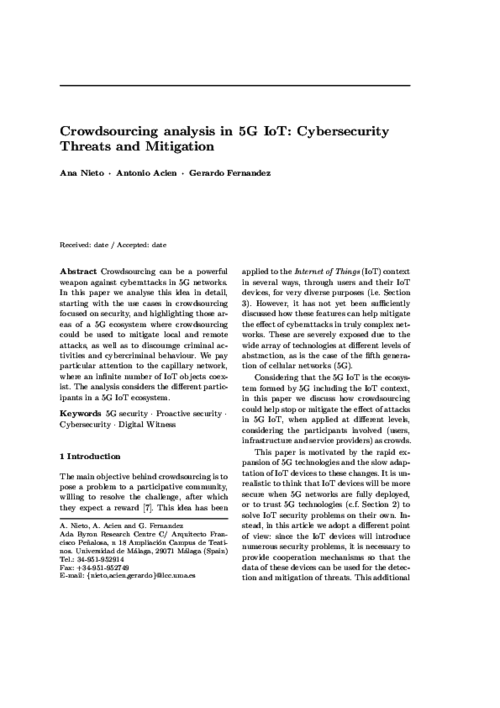 ] Type Year
] Type Year XVII Reunión Española sobre Criptología y Seguridad de la Información, pp. 168-173, 11/2022.
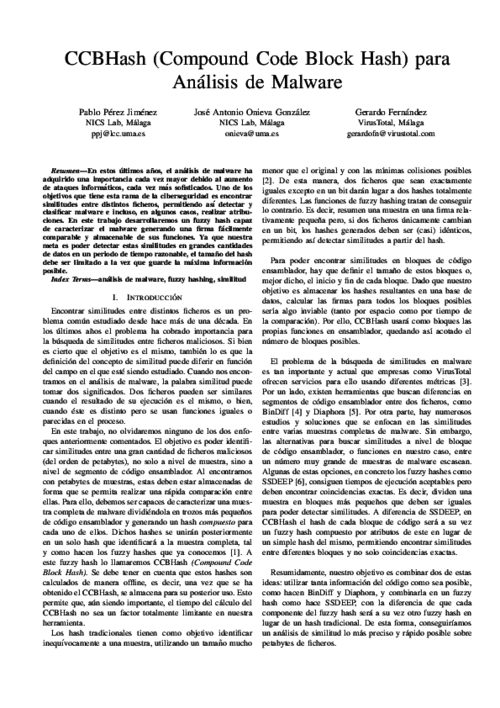
15th International Conference on Trust, Privacy and Security in Digital Business (TrustBus 2018), vol. LNCS 11033, Springer Nature Switzerland AG, pp. 229–243, 09/2018. DOI
Abstract
Recent news have raised concern regarding the security on the IoT field. Vulnerabilities in devices are arising and honeypots are an excellent way to cope with this problem. In this work, current solutions for honeypots in the IoT context, and other solutions adaptable to it are analyzed in order to set the basis for a methodology that allows deployment of IoT honeypot.
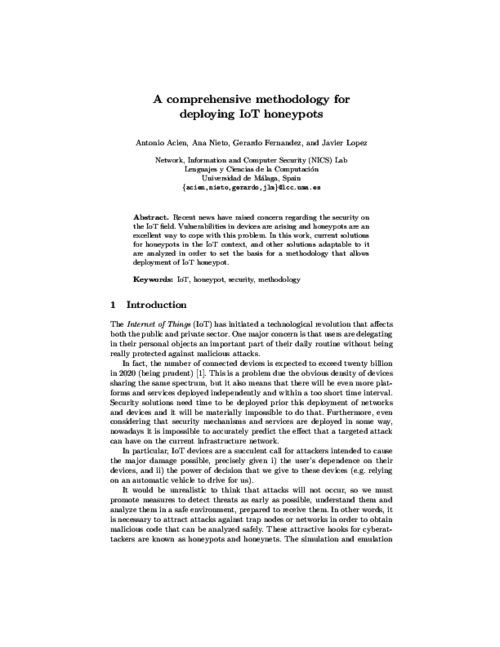
III Jornadas Nacionales de Investigación en Ciberseguridad (JNIC 2017), Servicio de Publicaciones de la URJC, pp. 91-98, 06/2017.
Abstract
Este trabajo propone una arquitectura de despliegue de honeypots adaptativos, configurados dinámicamente a partir de los requisitos del malware que intenta infectar los servicios trampa. A diferencia de otros trabajos sobre honeypots adaptativos, los mecanismos de adaptabilidad aquí diseñados tomarán como base información de inteligencia sobre amenazas actuales, indicadores de compromiso (IOCs) conocidos, así como información de actividades sospechosas actualmente en estudio por los analistas. Este conocimiento será empleado para configurar honeypots de manera dinámica, permitiendo satisfacer los requisitos necesarios para que el malware pueda desplegar toda su operativa.
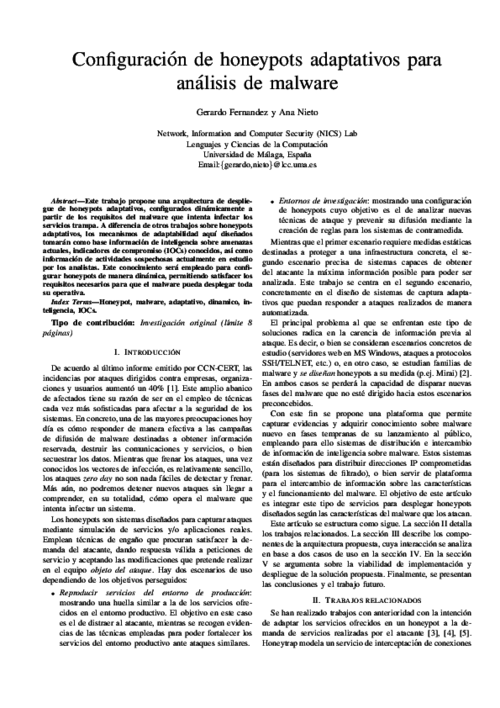
9th International Conference on Risks and Security of Internet and Systems , vol. 8924, Springer International Publishing, pp. 17-34, 04/2015. DOI
Abstract
Anomaly-based detection applied in strongly interdependent systems, like Smart Grids, has become one of the most challenging research areas in recent years. Early detection of anomalies so as to detect and prevent unexpected faults or stealthy threats is attracting a great deal of attention from the scientific community because it offers potential solutions for context-awareness. These solutions can also help explain the conditions leading up to a given situation and help determine the degree of its severity. However, not all the existing approaches within the literature are equally effective in covering the needs of a particular scenario. It is necessary to explore the control requirements of the domains that comprise a Smart Grid, identify, and even select, those approaches according to these requirements and the intrinsic conditions related to the application context, such as technological heterogeneity and complexity. Therefore, this paper analyses the functional features of existing anomaly-based approaches so as to adapt them, according to the aforementioned conditions. The result of this investigation is a guideline for the construction of preventive solutions that will help improve the context-awareness in the control of Smart Grid domains in the near future.
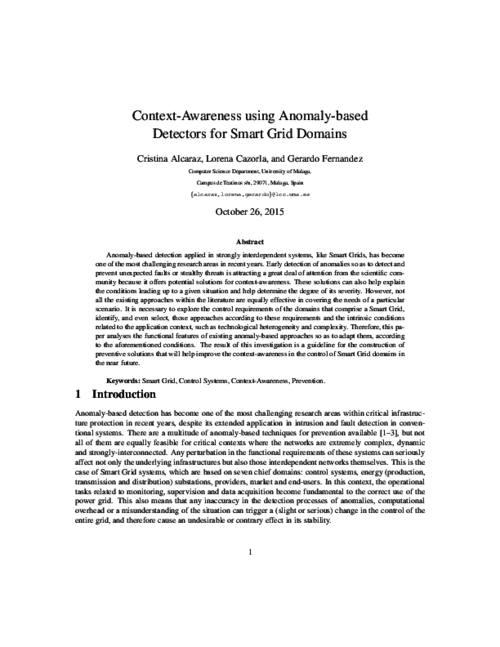
Mobile Networks and Applications (MONET), Springer US, pp. 881-889, 10/2018. DOI
Abstract
Crowdsourcing can be a powerful weapon against cyberattacks in 5G networks. In this paper we analyse this idea in detail, starting from the use cases in crowdsourcing focused on security, and highlighting those areas of a 5G ecosystem where crowdsourcing could be used to mitigate local and remote attacks, as well as to discourage criminal activities and cybercriminal behaviour. We pay particular attention to the capillary network, where an infinite number of IoT objects coexist. The analysis is made considering the different participants in a 5G IoT ecosystem.
